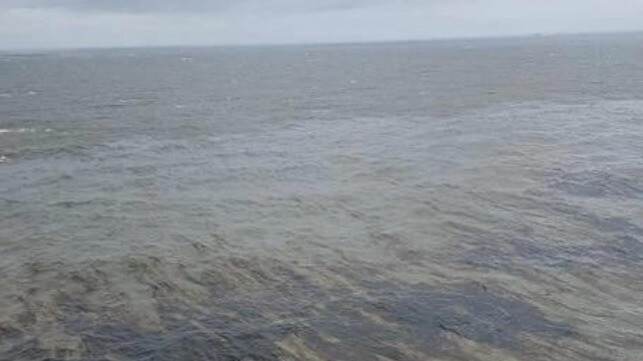Report: Russia's Shadow Fleet is Pumping Oily Waste Overboard

Russia's "shadow fleet" tankers are in the habit of dumping oily waste into the water, according to a review of satellite imagery conducted by Politico.
Oily waste dumping at sea is a violation of MARPOL, and is used as a cost-saving or convenience measure by some vessel operators and crewmembers. It circumvents the need to run an onboard oily-water separator or to incur the substantial expense of in-port wastewater treatment services. Globally, it is the single largest human source of oil pollution into the sea, and (according to the Outlaw Ocean Project) exceeds the volume of the Exxon Valdez and Deepwater Horizon spills combined every three years. The practice has been found aboard well-regarded vessels: the largest intentional violation ever prosecuted was a five-ship pattern of oily waste dumping discovered in the fleet of Princess Cruise Lines, resulting in a record $40 million fine and a consent decree for the operator.
It appears that Russia's little-regulated "shadow fleet" may also be in the habit of dumping oily waste over the side. Using satellite imaging from SkyTruth - which has spotted suspected oil-dumping vessels many times before - Politico and the independent journalism outfit SourceMaterial have spotted at least five shadow fleet tankers leaving oil slicks behind as they sail towards European waters. The visual evidence suggests that even without a major marine casualty and a large-scale spill, Russia-linked tankers are already polluting the seas on their way to and from the EU.
“The oil spills and risk of slicks are horrendous," said shadow fleet expert Isaac Levi of the Centre for Research on Energy and Clean Air (CREA), speaking with Politico last year. “Beyond the environmental damage, some of which will be irreversible, it’s a huge impact to coastal states that have to bear the cost of cleaning this up.”
The shadow fleet also poses an outsize risk of major accidents. Its anonymous owners flag their ships with low-reputation open registries, or with registries that do not exist at all, indicating little or no regulatory oversight. Due to G7 sanctions pressure, these owners select P&I coverage from insurers outside of the IACS group; some of these little-known underwriters are unlikely to be able or willing to pay out for a billion-dollar spill. And on average, shadow fleet vessels are older than the global tanker fleet as a whole, generally a sign of lower vessel quality and more frequent need for repairs.
Environmental harm is not the only risk. At least one Russia-linked tanker has been linked to disruptive "hybrid warfare" drone raids in the western Baltic region. Another, the Eagle S, was detained and investigated for damaging subsea cables in the Gulf of Finland with its anchor. Both vessels were ultimately released to continue on their commercial voyages, though in each case top officers were arrested to face charges.
